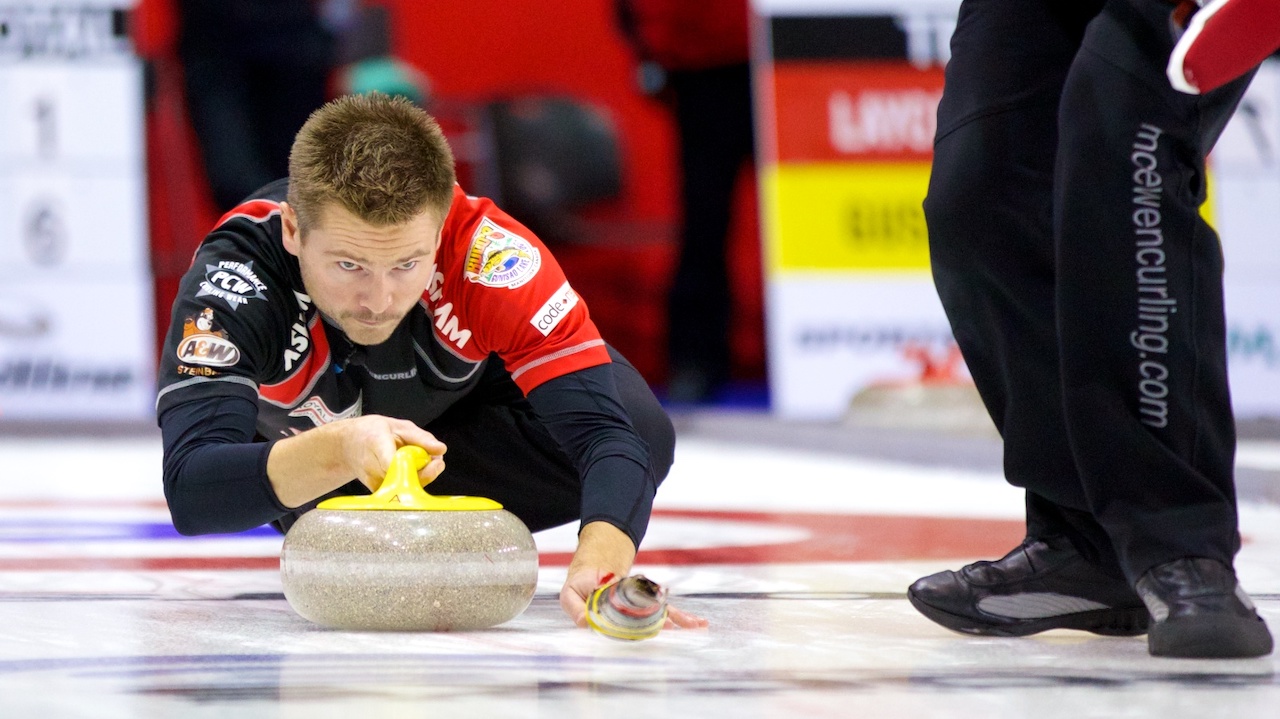McEwen weighs in on the five-rock rule
By Mike McEwen
Five-rock rule — The next evolution? In one word: Yes.
Now don’t get me wrong as I was one of the initial skeptics. In fact, when it was proposed to the players to try the five-rock free guard zone for the first time in competition, our team was a bit reluctant. Why? Well, at the time, all of the Canadian teams were in the midst of chasing Olympic trials qualification points. Grand Slams are some of the most important events in this race and we weren’t entirely sure this rule modification would suit our game-play. But, the 2011 Canadian Open of Curling in Kingston, Ont., went ahead with the competing players’ blessings, and was the very first event to use this updated rule. And guess what happened?! Well, we went through the event undefeated … so no complaining allowed from us, haha!
Now that we’ve conclusively established my bias toward the five-rock rule, let’s try and look at things objectively and toss in some history on how our sport has evolved too.
Initially, there was no free guard zone in curling. Ice conditions were not great and enough misses generated lots of interesting play. But, as both the ice and the players improved, the peeling/hitting game became perfected by the best of the teams. Fewer rocks in play meant low-scoring affairs and not enough entertainment for viewing fans. The fix? In came the free guard zone. Canada actually only adopted the three-rock version in 1993-94, despite the World Curling Federation going straight to a four-rock FGZ. Eventually (some nine years later!) we followed suit to use the four-rock rule in 2002-03.
Here we are again — this time 11 years later. What do you think has happened? Is there a need to change/improve curling again? The Grand Slams have been innovators and are always looking to create a better future for our sport — both for the player and the fan! That’s why the introduction of eight ends (from the traditional 10) and “thinking time” came into the events long ago. A more “TV friendly” viewing time-frame and a better timing system for us all!
But seriously, do we need a change to the free guard zone? Currently, playing conditions are being managed quite effectively, our athletic equipment has technologically improved and teams are pushing the limits of precision. Maybe, we are getting too good … time to make it harder?
For the most part, especially when the game is close, you won’t even notice a difference. But, when a team is down is when the five-rock FGZ shines — the leading team on the scoreboard is forced to continually battle multiple-rock situations. Essentially, you won’t be able to smack a guard out of play until the sixth rock of the end — unless it is your rock colour (put there by accident?) of course. All rocks in the house are game to be hit out of play as usual, just some extra pesky guards that have the potential to give us all headaches at some point during the week! Defending becomes more complicated and that’s what everyone wants to see … head-scratching, finesse shot-making, clutter and more rock explosions! “Harder” wasn’t the right word in the previous paragraph … the intent is to increase entertainment! Heck, players love rocks in play just as much as the fans do. It’s good for everyone!
So, here’s looking forward to the second test event of the five-rock FGZ. Cheers to the Grand Slams for making it happen. I hope everyone enjoys the viewing experiencing from the Syncrude National in Fort McMurray, Alberta!

